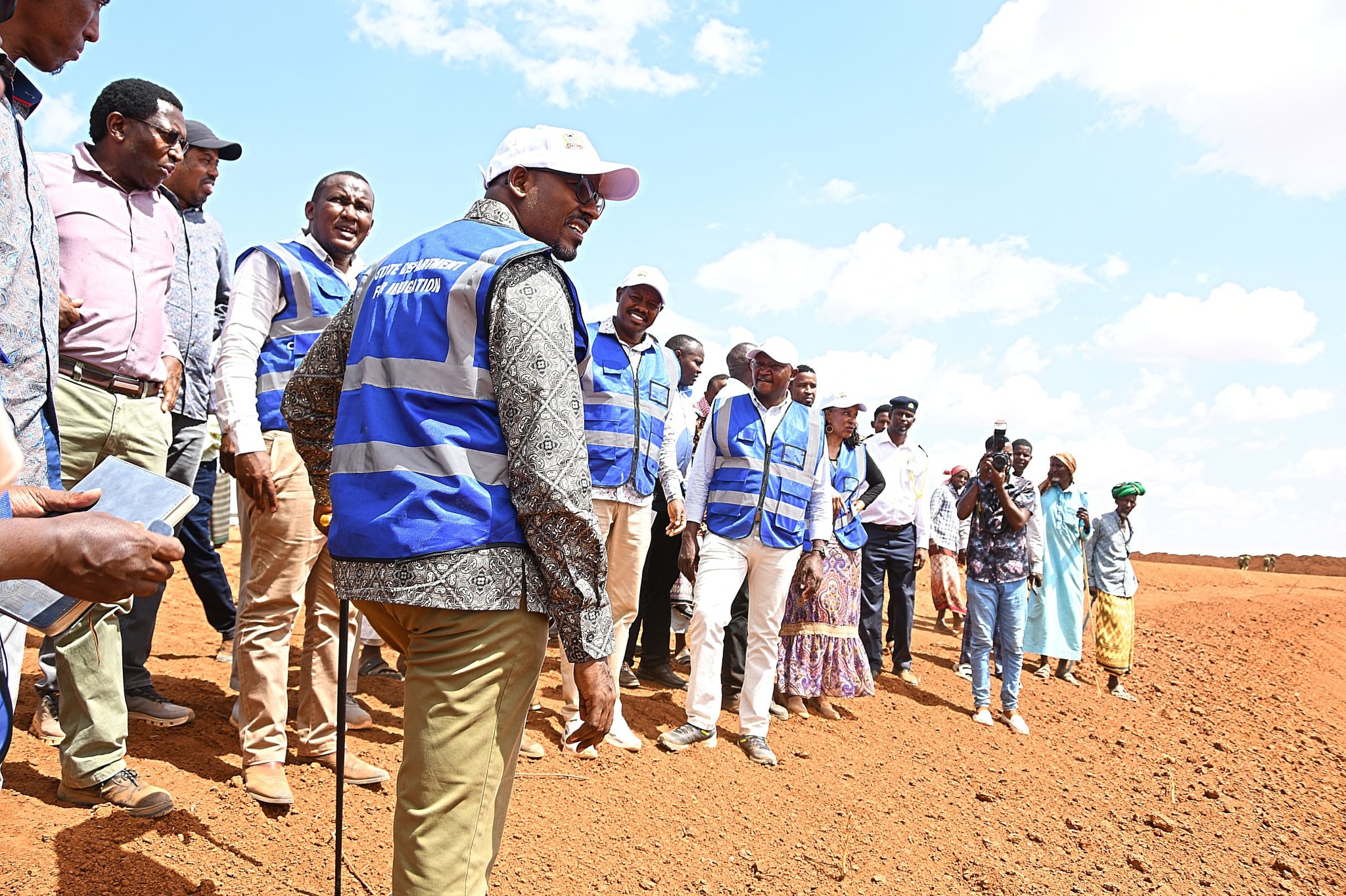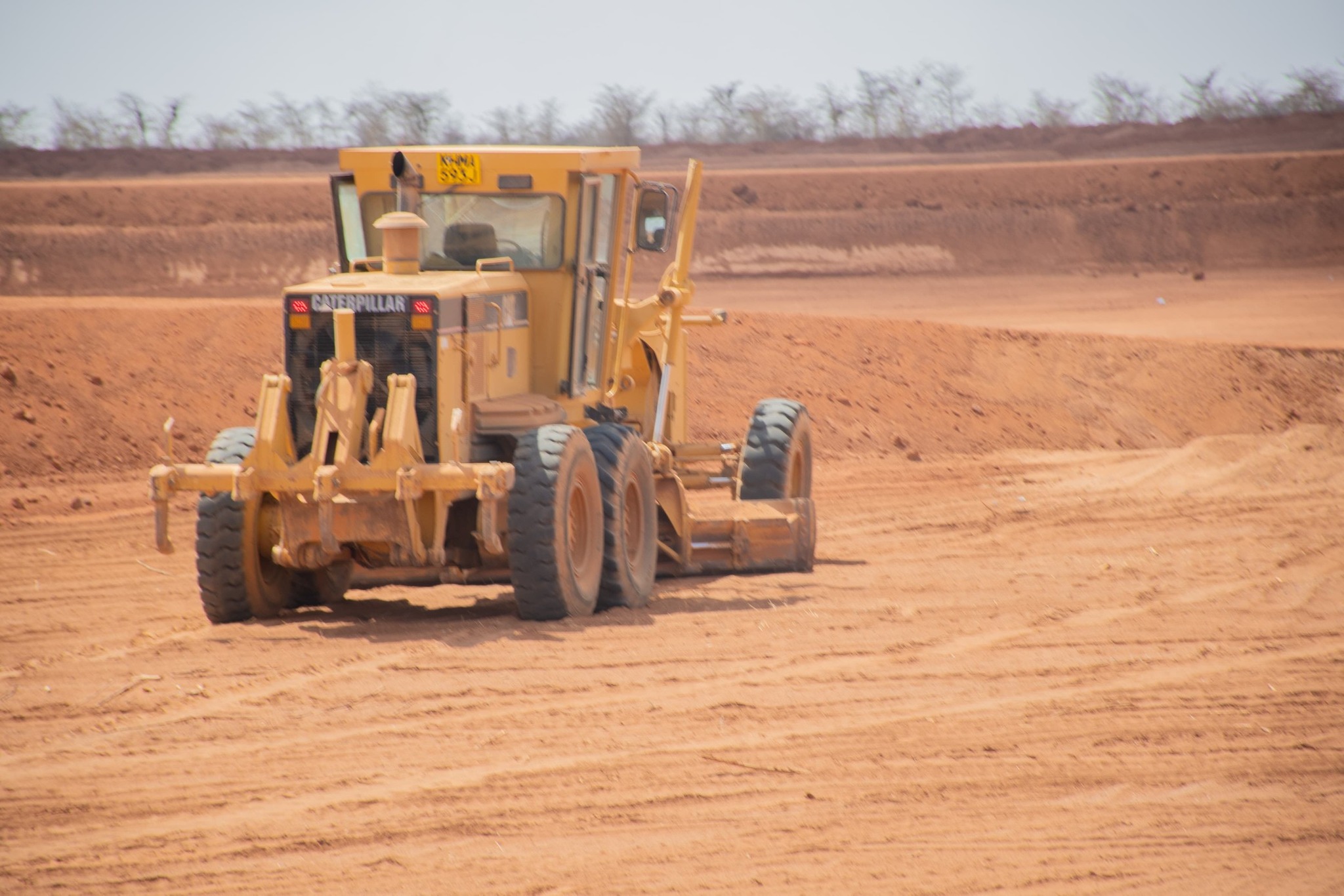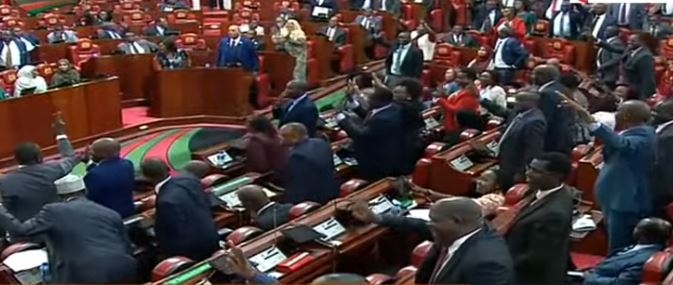
PS for ASALs and Regional Development, Kello Harsama

Wajir Governor Ahmed Abdullahi and other leaders during an inspection tour of the feedlot project in Griftu.
 Work is ongoing at the Griftu feedlot project in Wajir, which is nearing
completion.
Work is ongoing at the Griftu feedlot project in Wajir, which is nearing
completion.A landmark feedlot project in Wajir set to boost the local economy and designed to support pastoralists during drought periods is nearly complete.
The feedlot [area where livestock are gathered and fed or fattened up for market] in Griftu will inject approximately Sh288 million annually into the economy through improved agricultural productivity and livestock commercialisation.
The initiative, which spans 5,000 acres and can hold up to 15,000 livestock, is expected to revolutionise large-scale livestock management.
Beyond drought mitigation, it aims to commercialise livestock production, establish vital pasture reserves and strengthen milk, meat and agricultural value chains across the region.
On Saturday, Irrigation PS Ephantus Kimotho, who led a host of national and county leaders inspecting the project in Wajir West, described it as a game-changer for the county and beyond.
“This project exemplifies the government’s integrated approach to improving water access, enhancing livestock value chains and building climate resilience in ASAL regions. It will create jobs, improve nutrition and support the shift from subsistence to commercial agriculture,” Kimotho said.
Anchored in President William Ruto’s directive to establish feedlots and water storage projects across ASAL regions, the initiative aims to transform dryland counties into hubs of sustainable livestock and crop production.
It also forms part of the government’s broader plan to establish 450 feedlot projects countrywide to strengthen value chains and enhance drought resilience.
Key infrastructure under implementation includes diversion works, a 6.5-kilometre open water channel, road crossings and four water pans with a combined capacity of 750,000 cubic metres.
The project also features solar power installations and perimeter fencing to safeguard the investment.
Principal Secretary for ASALs and regional development, Kello Harsama, said the project reflects the government’s dedication to practical, community-driven solutions tailored to the unique needs of pastoral communities.
“The Griftu Feedlot Project is a model of how collaboration between national and county governments can deliver sustainable solutions to drought and food insecurity in ASALs,” Harsama said.
“We are building a future where livestock losses due to drought become a thing of the past. By investing in resilience projects like this, we are securing livelihoods and restoring dignity for communities that have borne the brunt of climate shocks for decades,” he added.
Wajir governor Ahmed Abdullahi lauded the project’s progress, saying it would transform pastoral livelihoods and strengthen the local economy.
“This project is a lifeline for our people. It will empower pastoral communities to embrace commercial agriculture and secure their livelihoods against recurrent droughts,” he said.
“This initiative serves as a sustainable response to the tragic loss of over 2.5 million livestock units during the 2020–2022 drought, ensuring such devastating impacts never threaten our livelihoods again. It also stands as a national model for feedlot structures to be replicated across Kenya,” Abdullahi added.
He thanked the President for his visionary leadership and unwavering commitment to building climate resilience in the ASAL counties.
The Griftu Feedlot Project was conceptualised following the devastating 2020/2021 drought, which led to the loss of over 2.5 million livestock across ASAL counties.
It now stands as a model for sustainable livestock production, drought resilience and economic transformation in Kenya’s dryland regions.
Also present during the inspection were senior officials from both the national and county governments, including Irrigation secretary Joel Tanui (Land reclamation and climate resilience) and his administration counterpart Yatich Kipkemei, county commissioner Karuku Ngumo, director for irrigation water management Daniel Oder and director for climate resilience Thandi Githae.












